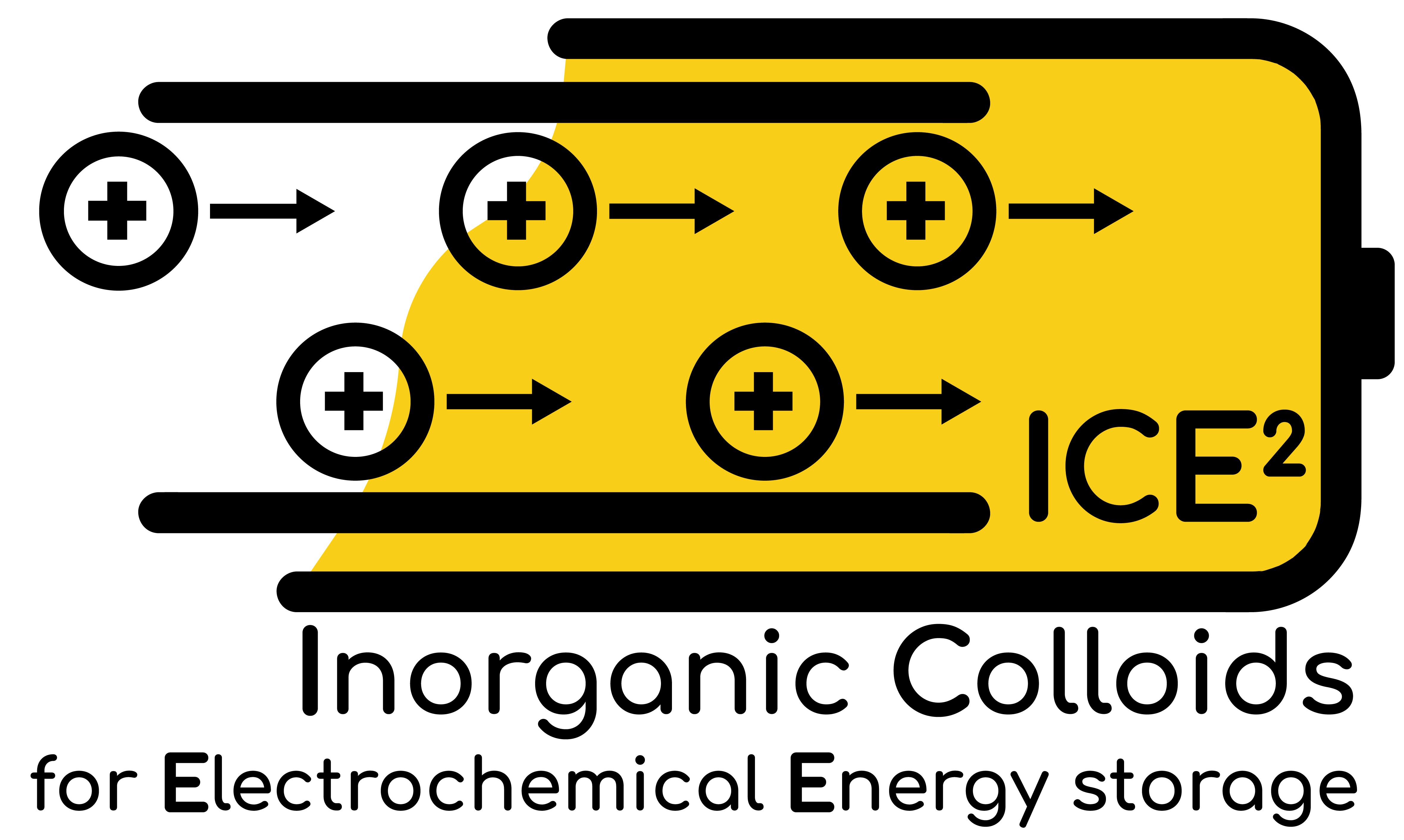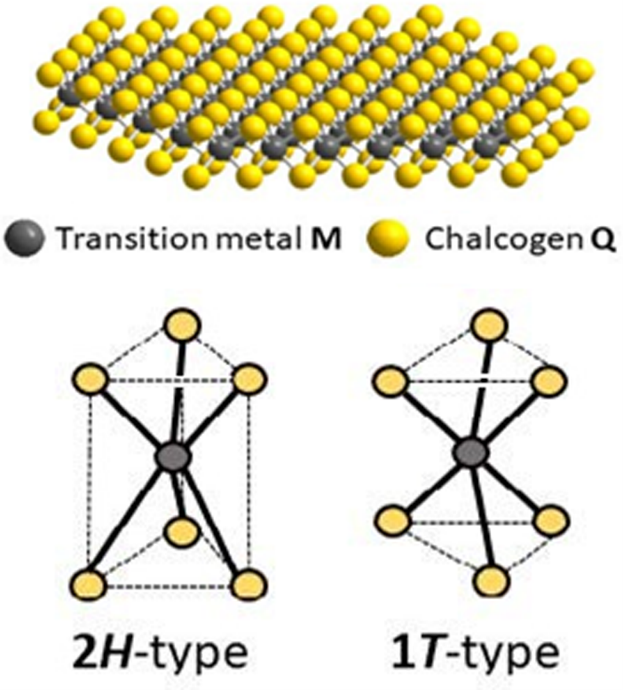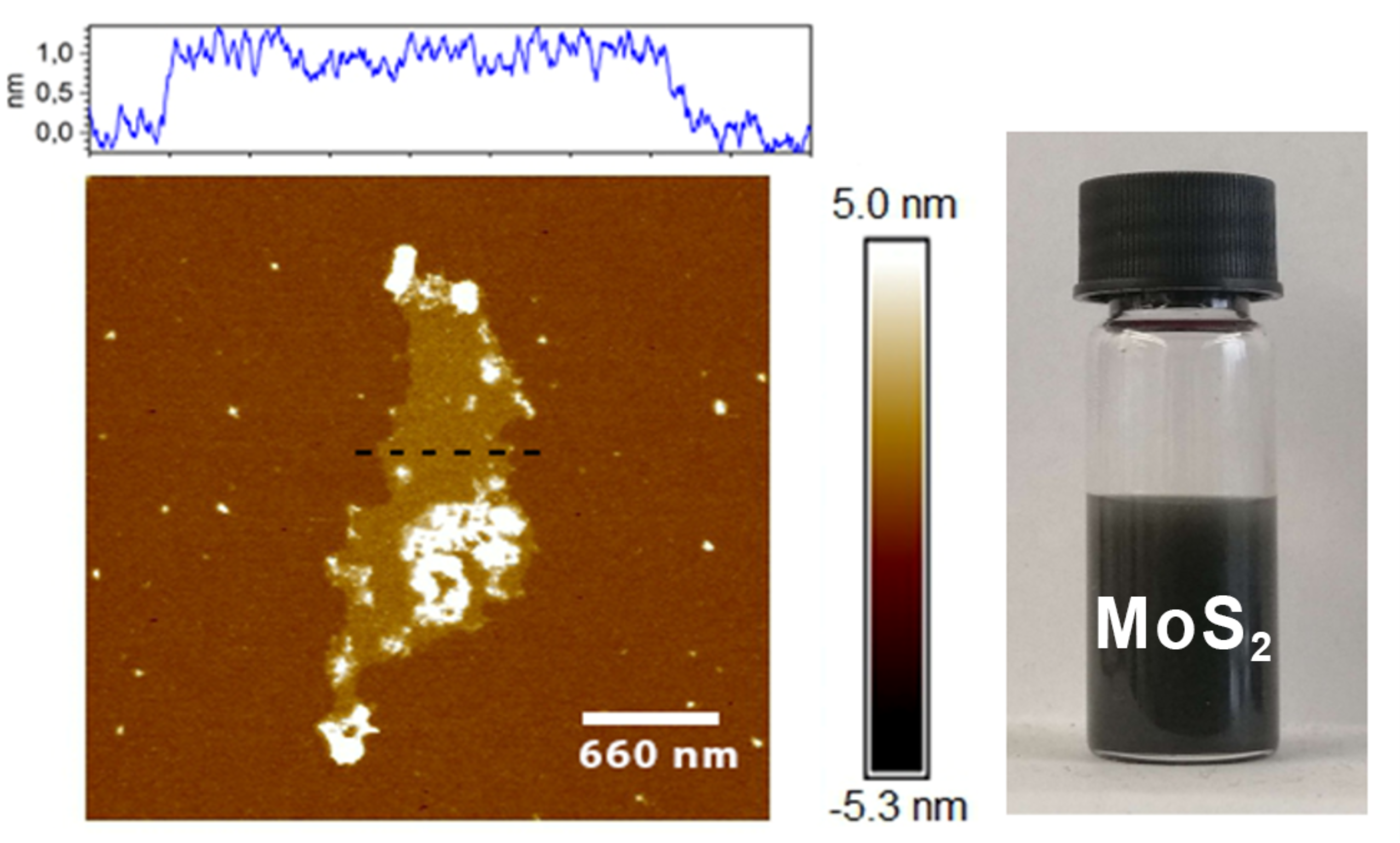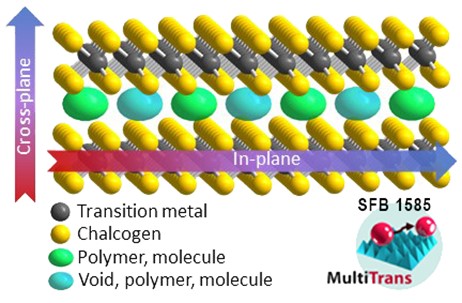Research topics
Our main research focus lies in the chemistry, properties, and applications of nanoscale 2D transition metal dichalcogenides (TMDs) nanosheets. TMDs MQ2 are a class of materials composed of a transition metal M (e. g. group 4-6) and chalcogen Q such as sulfur, selenium, or tellurium. Our main research focus lies in 2D layered TMDs composed of MQ2 layers with strong covalent bonds in-plane and weak van der Waals interlayer interactions, e. g. molybdenite MoS2. Depending on the layer structure such as 3R-, 2H- or 1T-type TMDs can exhibit metallic, semi-metallic or semiconducting behavior. On a nanoscale level, due to quantum confinement of the electronic structure, their physical and chemical properties can drastically change, making them interesting materials for various technical applications.
Fabrication of 2D-TMD nanosheets
The strong anisotropy in the bonding situation in 2D layered TMD materials allows for the layered crystallites to be separated into nanoscale few-layer or monolayer entities. This dimensional reduction is usually achieved by reduction of M+IV to M+III and subsequent intercalation of cationic alkali metal species. Upon introduction of the intercalated material into water, intense hydrolysis occurs, leading to the formation of hydrogen gas, ripping apart the individual layers. Subsequential size selection of the prepared material is performed by cascade centrifugation to yield samples with narrow dispersity.
In our efforts to improve established TMD nanosheet syntheses, we are establishing a mild, spontaneous, thermodynamically driven delamination method for MoS2 nanosheets. This approach requires precise control of the surface charge density in reduced TMDs and matching it with appropriate equivalent areas of bulky intercalating cations. This novel and gentle delamination approach will yield liquid crystalline suspensions of strictly single layer TMD nanosheets, which will allow for the fabrication of hierarchically structured compounds or surface coatings.
Thermal transport in 2D layered chalcogenide-based heterostructures
Hybrid stacks composed of atomically thin 2D nanosheets and organic moieties incorporated in narrow slits between them, represent an innovative platform that allows tailoring of physical properties at the atomic scale in a modular way. Such structured materials may find applications in various areas, as both electronic and phononic properties can be tuned through material composition, slit height, and type of filler material. In cooperation with our partners performing theoretical atomistic modelling and thermal transport measurements, we hope to contribute to a deeper fundamental understanding of how anisotropic heat- and electron transport can be tailored and controlled by material design and confinement.
This Project is part of the Collaborative Research Centre SFB 1585 Multitrans “Structured functional materials for multiple transport in nanoscale confinements” financed by the German Research Foundation (DFG).
Abschlussarbeiten, HiWi-Stellen
Stellen für Hilfswissenschaftler (HiWis) werden jederzeit angeboten.
Bei Interesse an einer Bachelor-/Masterarbeit wenden Sie sich bitte direkt and Daniel.Friedrich@uni-bayreuth.de.




